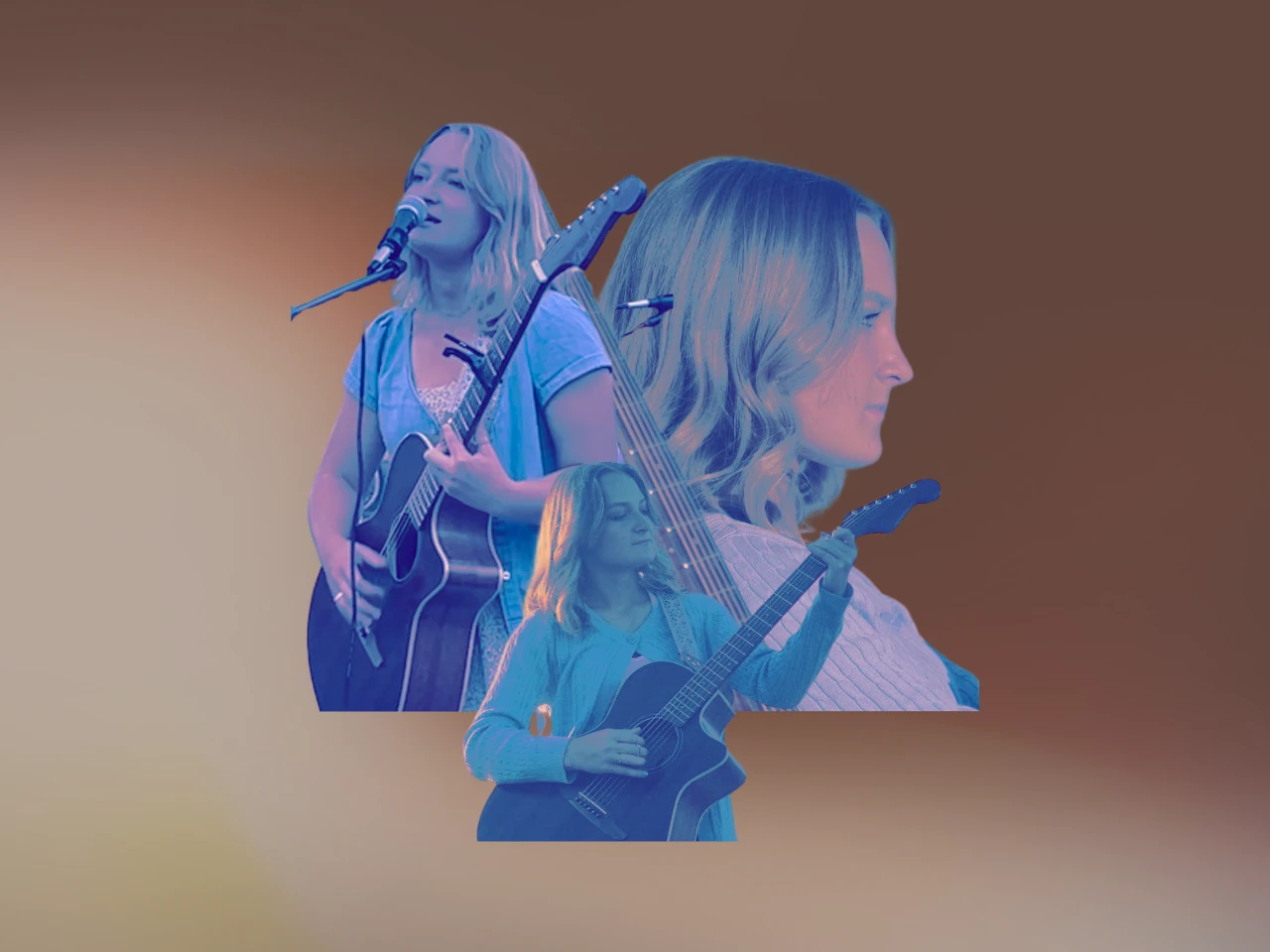I was taught the “rules” of grammar in just one day. Yes, one day.
Smack dab in the middle of fourth grade, a teacher I’d never met came into my English class with a stack of flashcards adorned with panda bears and crocodiles. Without a single introduction or word of warning, the teacher held up a card with a large red fire truck on it and said, “This is a noun.”
At the smart-ass age of nine-years-old, I immediately said, “That is a fire truck.”
The teacher didn’t care for my assessment. Instead, we continued to flip through the deck. In that one day, we learned about nouns, verbs, adverbs, adjectives, commas, comma splices, and the basic structure of an independent clause. Everyone in the class was quickly given a worksheet to complete and a single red pen. None of us really knew what the red pen was for. Most of us ended up throwing them at each other.
In less than an hour we were done, but for the next decade of my educational career, we were tested. Tested on semicolons, colons, dashes, hyphens, predicates, subordinate clauses, relative clauses, participles. English papers were held under the microscope of the correct usage of the adverbial clause.
We quickly learned what the red pen was for.
Throughout my education, grammar became something to approach with a ten foot pole (or a body shield, if you had one). My teachers treated commas and periods as these unmovable things bound by convention and wrapped up in a simple "you are right" or "you are wrong." To get it right meant a gold star. To get it wrong meant a web of red lines waiting to trap your tongue.
Early in my writing life, I rarely ever experimented with the form or structure of my paragraphs or sentences because I didn’t see grammar as creative or expressive. Grammar was a rule—a rule I couldn’t seem to ever follow correctly.
Believe me when I say the web of red on my English papers were tightly woven.
For years I thought it was simply my fault. Doubt whispered in my ear that I simply wasn’t smart enough to understand grammar. That I had failed the fundamentals of writing itself. Grammar was the enemy. A weapon. The gatekeeper standing watch at the edge of the castle, ready to deny entry to any dangling modifier or misplaced apostrophe. There was no beauty in the in-between.
Then of course, I met Virgina Woolf.
>>>
Ironically enough, I first read Virgina Woolf in high school—the same school that made me fear the 15 uses of the comma. A writer of the late 1800s to the early 1900s, Woolf is a common English classroom favorite. You might have read Mrs. Dalloway, A Room of One’s Own, or even To The Lighthouse in AP English like I did. Woolf is particularly known for her modernist style, stream-of-consciousness writing, and for, yes, her love of punctuation.
And there’s nothing Woolf loves more than a (dreaded) semicolon. Yet, in her hands, it’s not so dreaded. In her narratives, Woolf not only breathes life into semicolons and colons and em dashes—she speaks punctuation into a creative language.
Today, out of curiosity, I opened my copy of To The Lighthouse by Virgina Woolf to a random page—page 19 to be exact. Here is the passage I read:
“Then beneath the colour there was the shape. She could see it all so clearly, so commandingly, when she looked: it was when she took her brush that the whole thing changed. It was in that moment’s flight between the picture and her canvas that the demons set on her who often brought her to the verge of tears and made this passage from conception to work as dreadful as any down a dark passage for a child. Such as she often felt herself—struggling against terrific odds to maintain her courage; to say: “But this is what I see; this is what I see,” and so to clasp some miserable remnant of her vision to her breast, which a thousand forces did their best to pluck from her. And it was then too, in that chill and windy way, as she began to paint, that there forced themselves upon her other things, her own inadequacy, her insignificance, keeping house for her father off the Brompton Road, and had much ado to control her impulse to fling herself (thank Heaven she had always resisted so far) at Mrs. Ramsay’s knee and say to her—but what could one say to her? “I’m in love with you?” No, that was not true. “I’m in love with this all,” waving her hand at the hegde, at the house, at the children. It was absurd, it was impossible” (Woolf 19).
You see what I mean about punctuation?
With that passage alone, we see every piece of punctuation from the comma, to the colon, to the semicolon, to the em dash, to parentheses, to quotations. If I have counted correctly, there are: 15 commas, two colons, two semicolons, two em dashes, two parentheses, and six quotation marks.
But the amount of punctuation she packs into just over 230 words is not what we’re really looking at: It’s how she chooses to use punctuation that is so interesting.
Take, for example two key sentences in this passage:
“It was in that moment’s flight between the picture and her canvas that the demons set on her who often brought her to the verge of tears and made this passage from conception to work as dreadful as any down a dark passage for a child” (Woolf 19).
“And it was then too, in that chill and windy way, as she began to paint, that there forced themselves upon her other things, her own inadequacy, her insignificance, keeping house for her father off the Brompton Road, and had much ado to control her impulse to fling herself (thank Heaven she had always resisted so far) at Mrs. Ramsay’s knee and say to her—but what could one say to her” (Woolf 19)?
The strict teacher from your youth might tell you that the first sentence is, in fact, grammatically incorrect. That’s too long and complicated. That it needs to be broken up.
But that first sentence is exactly how Woolf wants it to be. Because Virgina Woolf is not using grammar as some stringent rule book. She is using grammar as an extension of language. She is conveying human nature through her use of punctuation (and her lack thereof).
In the first sentence, the painter is having a pure rush of emotion. She is in flight—the demons are chasing her and in that moment there is no stopping what she is feeling. So Woolf provides no stop. She conveys this onslaught by making you run through it with her character. There is no time to breathe, so make sure your lungs are full. In the second sentence, the painter is no longer in a pure state of feeling. She is slowing down, and in that dip, she is broken up by emotion. She feels afraid, insignificant, confused—she is distracting herself with her own anxious, punctured thoughts. So Woolf punctures us with stops. She makes us pause at each emotion, doubt ourselves with intrusive thoughts introduced by parenthesis and em dashes.
It’s Woolf’s “show don’t tell.” Through punctuation, we feel without being told how to feel.
Woolf finds the beauty in the in-between.
I’m also caught by the way she uses her second semicolon: “‘But this is what I see; this is what I see…’” (Woolf 19). In her hands, the semicolon is not something to be mastered or tested on. In between her words, the semicolon becomes an expression of its own—a breath used with and without consideration. She is asking you to take a moment with her, just a moment, before continuing to feel.
Virginia Woolf breaks down punctuation into something personal. Something malleable. A thread to be knitted how she sees fit.
After first reading To The Lighthouse in my last year of high school, my relationship with grammar changed. Woolf showed me how something as simple as the common comma can be creative. While I still misplaced a modifier or two in my own writing, I started testing the boundaries of punctuation. I started completely removing punctuation from long breaths of unyielding emotion. I inserted periods left and right to convey speed and intensity. The em dash became my favorite way to pull attention and grab heartstrings. I learned how to shape my text, mold it in my hands, and create something entirely my own.
When starting a new writing project, I finally turned my attention towards form—towards the deconstruction of language. Every new page seemed to whisper again and again: What can we try next? Once the walls came down, the flood came in. Truth be told, I haven’t stopped experimenting since.
What you can take from Woolf and her wild use of commas and semicolons is freedom. The freedom to make punctuation work for you, not against you. The freedom to develop a style and way of speaking to your reader that exists only in those unspoken spaces. Woolf provides a path to the reclamation of craft.
Woolf says it best in her 1937 speech, “On Craftsmanship”:
“It is words that are to blame. They are the wildest, freest, most irresponsible, most unteachable of all things. Of course, you can catch them and sort them and place them in alphabetical order in dictionaries. But words do not live in dictionaries; they live in the mind… Thus to lay down any laws for such irreclaimable vagabonds is worse than useless. A few trifling rules of grammar and spelling are all the constraint we can put on them… They are highly democratic, too; they believe that one word is as good as another; uneducated words are as good as educated words, uncultivated words as cultivated words, there are no ranks or titles in their society. Nor do they like being lifted out on the point of a pen and examined separately. They hang together, in sentences, in paragraphs, sometimes for whole pages at a time… In short, they hate anything that stamps them with one meaning or confines them to one attitude, for it is their nature to change” (Woolf, “On Craftsmanship”).
Language, grammar—it’s all ours to shape. So let's shape it.
Author’s Note: This piece discusses a few negative experiences in English classrooms (a few among the many positive). These few experiences are not reflective of all experiences or people. In no way is this meant to convey a disrespect or dislike of educational spaces or teachers. The work of teachers is critical and should be valued.
Grace Safford is a staff writer for Flat Ink. She is a writer, editor, and gardener from a town in Northern Vermont so small cartographers sometimes confuse it for a lake. You can find her work published or forthcoming in Ghost City Press, Lucent Dreaming, Corvid Queen, Twist in Time, and Firewords. Currently, she is working on her first novel and a manuscript for a nature-based activity book
Editorial Art by Dilara Sümbül



